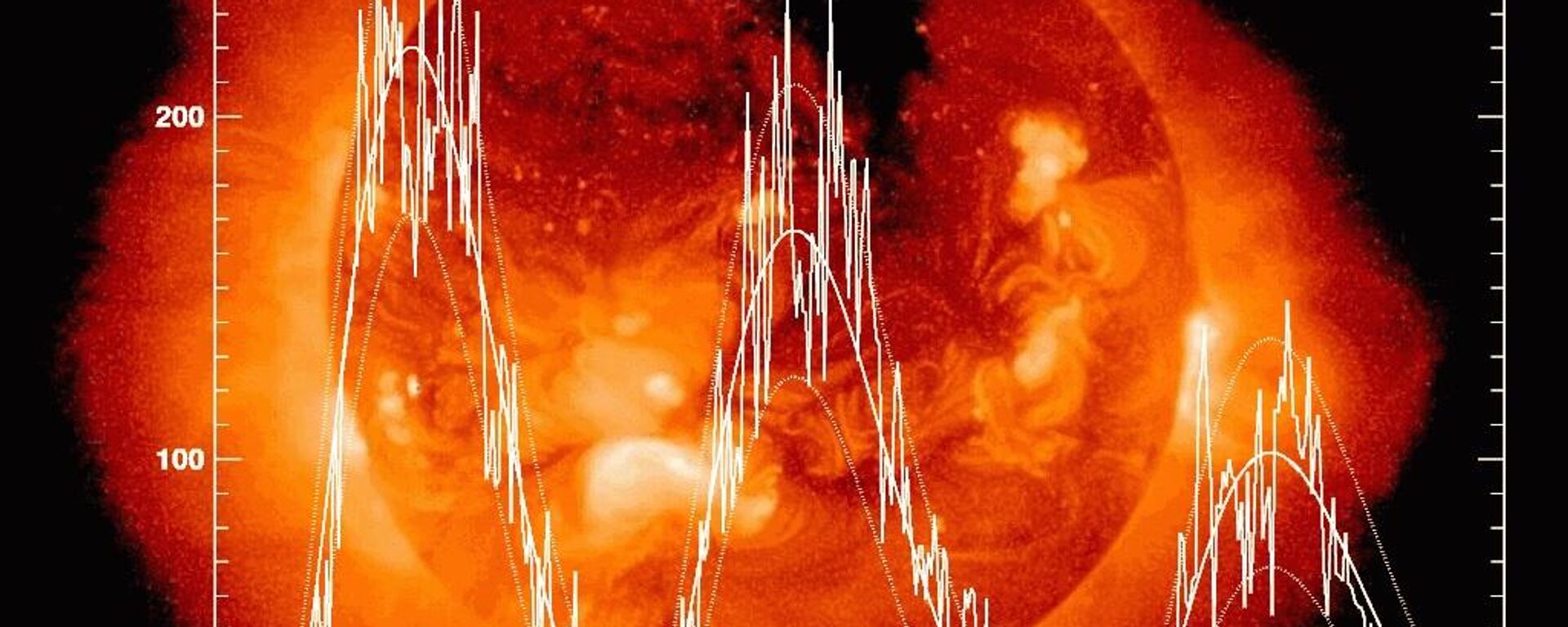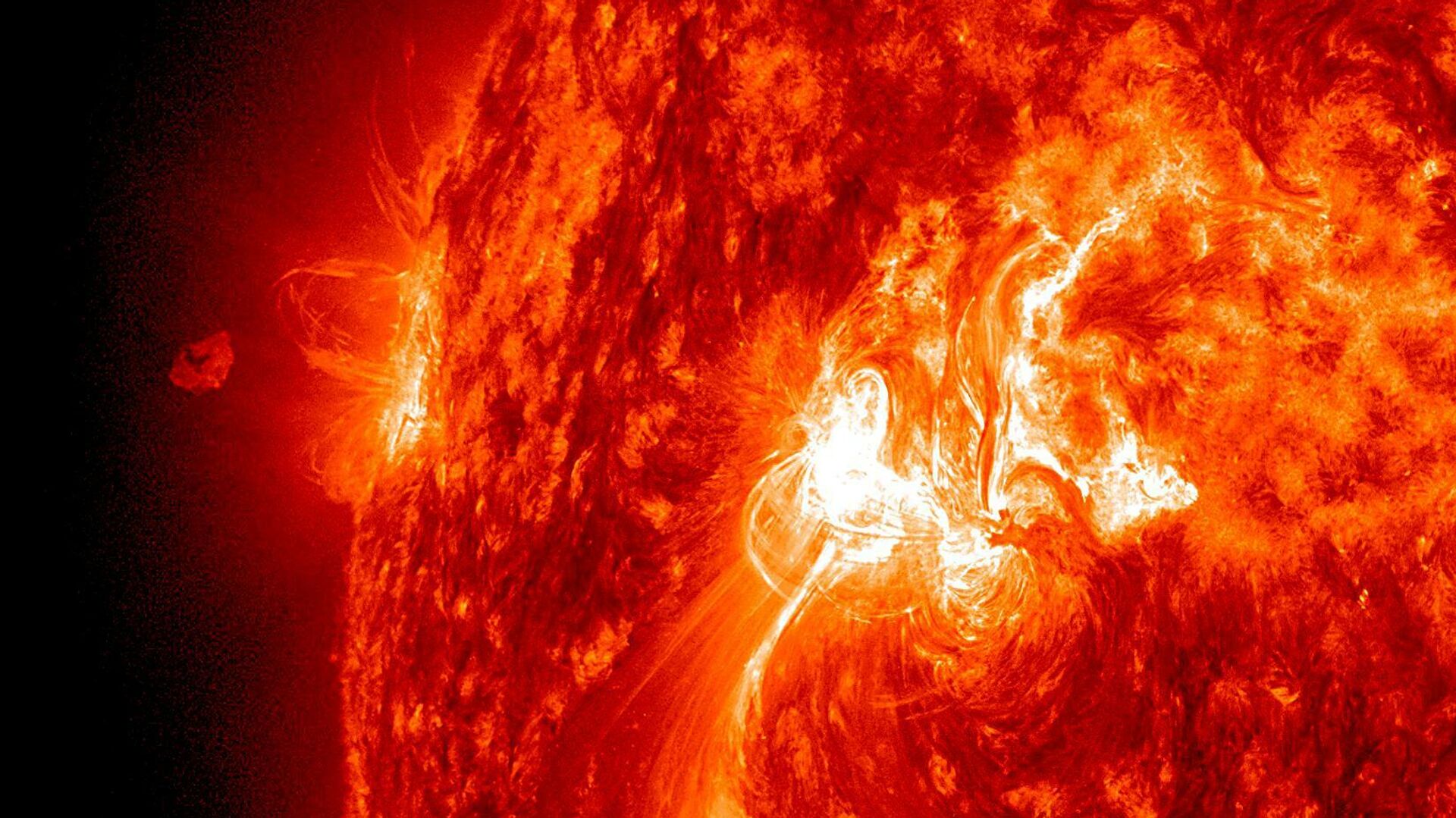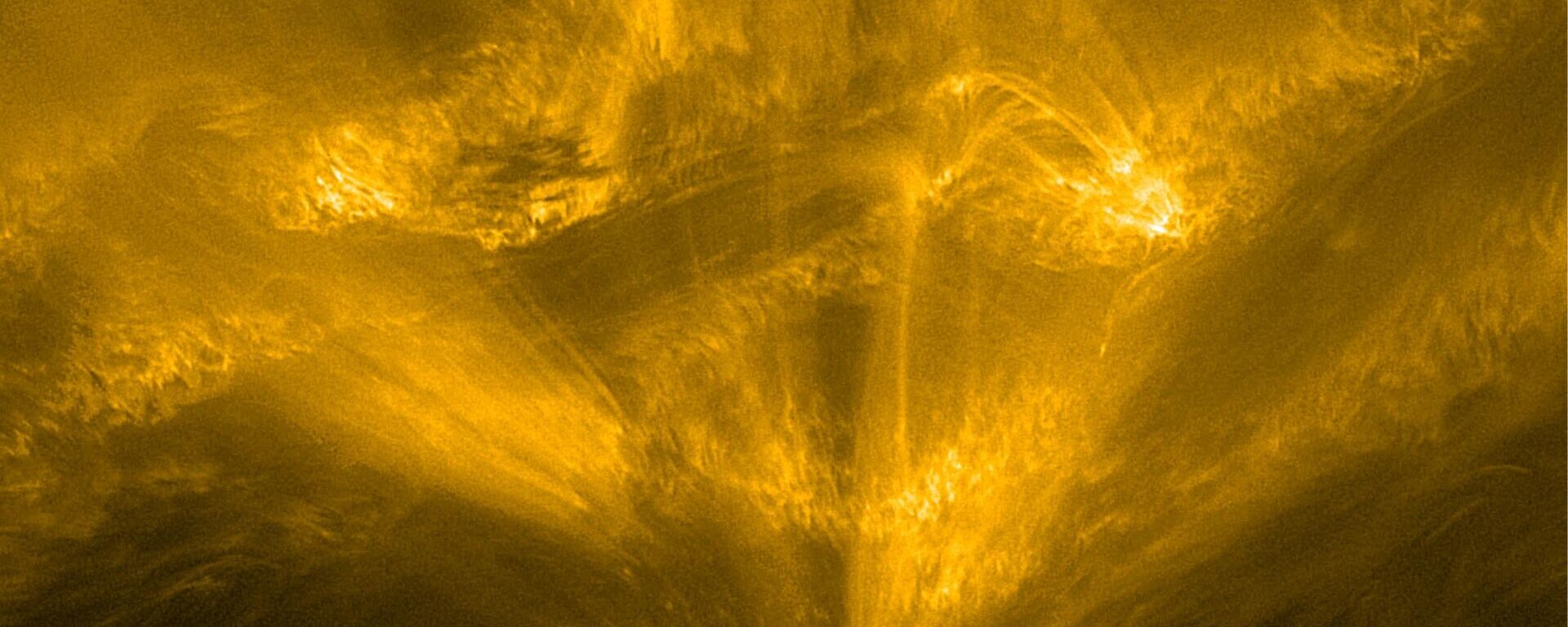https://sputnikglobe.com/20230227/solar-heartbeat-astronomers-pinpoint-pulse-like-signals-in-suns-atmosphere-1107834158.html
Solar Heartbeat? Astronomers Pinpoint Pulse-Like Signals in Sun's Atmosphere
Solar Heartbeat? Astronomers Pinpoint Pulse-Like Signals in Sun's Atmosphere
Sputnik International
The study attributes this mysterious "heatbeat" to the mysterious quasi-periodic pulsations of the Sun (QPP). 27.02.2023, Sputnik International
2023-02-27T11:18+0000
2023-02-27T11:18+0000
2023-02-27T12:16+0000
science & tech
sun
solar flare
https://cdn1.img.sputnikglobe.com/img/07e6/01/1d/1092597281_0:26:1650:954_1920x0_80_0_0_be1929e6807dbd6addc19a276253d7ef.jpg
A team of researchers has detected a radio signal in the Sun's atmosphere that resembles a heartbeat and the breakthrough study was published in the peer-reviewed scientific journal, Nature Communications.The solar flare that occurred in July 2017 was chosen as the focus of the study. Scientists analyzed the results of microwave observations that were carried out using the Expanded Owens Valley Solar Array (EOVSA) radio telescope in California.EOVSA is used for routine observations of the Sun over a wide range of microwave frequencies from 1 to 18 gigahertz (GHz) and is sensitive to radio emissions emanated by high-energy electrons in the Sun's atmosphere that are triggered by solar flares.The team noticed radio bursts with a signal pattern repeating every 10 to 20 seconds. The pattern was “like a heartbeat,” claims Yuankun Kou – the lead study author.Solar radio bursts are intense bursts of radio waves often associated with solar flares and characterized by repetitive signals. However, the origin of these repeating patterns, also called quasi-periodic pulsations, has long been a mystery.The team identified a strong quasi-periodic ripple signal at the base of a layer of electric current that stretches more than 25,000 kilometers through the flare region, where opposing magnetic field lines converge, break, and reconnect. This phenomenon is known as magnetic reconnection, which releases the energy that powers the flare.The researchers also found a secondary source of "heartbeat" that is located along the stretched current sheet, which pulsates in the same way as the main source of QPP, and is closely associated with it.The computer simulation showed that magnetic islands or bubble-like structures are formed in the current sheet, whose movement to the flare region occurs with a quasi-periodic character.According to the authors, the study made it possible to accurately determine the origin of QPP in solar flares and encourages a revision of the interpretation of similar events recorded earlier.
https://sputnikglobe.com/20230210/very-curious-scientists-baffled-by-images-showing-fragment-breaking-off-from-sun-1107286079.html
https://sputnikglobe.com/20220519/hedgehog-with-spikes-of-hot--cold-gas-revealed-during-solar-orbiters-historic-close-flyby-of-sun-1095630438.html
Sputnik International
feedback@sputniknews.com
+74956456601
MIA „Rosiya Segodnya“
2023
Sputnik International
feedback@sputniknews.com
+74956456601
MIA „Rosiya Segodnya“
News
en_EN
Sputnik International
feedback@sputniknews.com
+74956456601
MIA „Rosiya Segodnya“
Sputnik International
feedback@sputniknews.com
+74956456601
MIA „Rosiya Segodnya“
science & tech, sun, solar flare
science & tech, sun, solar flare
Solar Heartbeat? Astronomers Pinpoint Pulse-Like Signals in Sun's Atmosphere
11:18 GMT 27.02.2023 (Updated: 12:16 GMT 27.02.2023) The study attributes this mysterious "heatbeat" to the mysterious quasi-periodic pulsations of the Sun (QPP).
A team of researchers has detected a radio signal in the Sun's atmosphere that resembles a heartbeat and the breakthrough study was published in the peer-reviewed scientific journal, Nature Communications.
The solar flare that occurred in July 2017 was chosen as the focus of the study. Scientists analyzed the results of microwave observations that were carried out using the Expanded Owens Valley Solar Array (EOVSA) radio telescope in California.

10 February 2023, 03:54 GMT
EOVSA is used for routine observations of the Sun over a wide range of microwave frequencies from 1 to 18 gigahertz (GHz) and is sensitive to radio emissions emanated by high-energy electrons in the Sun's atmosphere that are triggered by solar flares.
The team noticed radio bursts with a signal pattern repeating every 10 to 20 seconds. The pattern was “like a heartbeat,” claims Yuankun Kou – the lead study author.
Solar radio bursts are intense bursts of radio waves often associated with solar flares and characterized by repetitive signals. However, the origin of these repeating patterns, also called quasi-periodic pulsations, has long been a mystery.
The team identified a strong quasi-periodic ripple signal at the base of a layer of electric current that stretches more than 25,000 kilometers through the flare region, where opposing magnetic field lines converge, break, and reconnect. This phenomenon is known as magnetic reconnection, which releases the energy that powers the flare.
The researchers also found a secondary source of "heartbeat" that is located along the stretched current sheet, which pulsates in the same way as the main source of QPP, and is closely associated with it.
The computer simulation showed that magnetic islands or bubble-like structures are formed in the current sheet, whose movement to the flare region occurs with a quasi-periodic character.
“The appearance of magnetic islands within the long-stretched current sheet plays a key role in tweaking the energy release rate during this eruption. Such a quasi-periodic energy release process leads to a repeating production of high-energy electrons, manifesting as QPPs in the microwave and soft X-ray wavelengths,” claims Xi Cheng, a professor of astronomy at the New Jersey Institute of Technology.
According to the authors, the study made it possible to accurately determine the origin of QPP in solar flares and encourages a revision of the interpretation of similar events recorded earlier.





